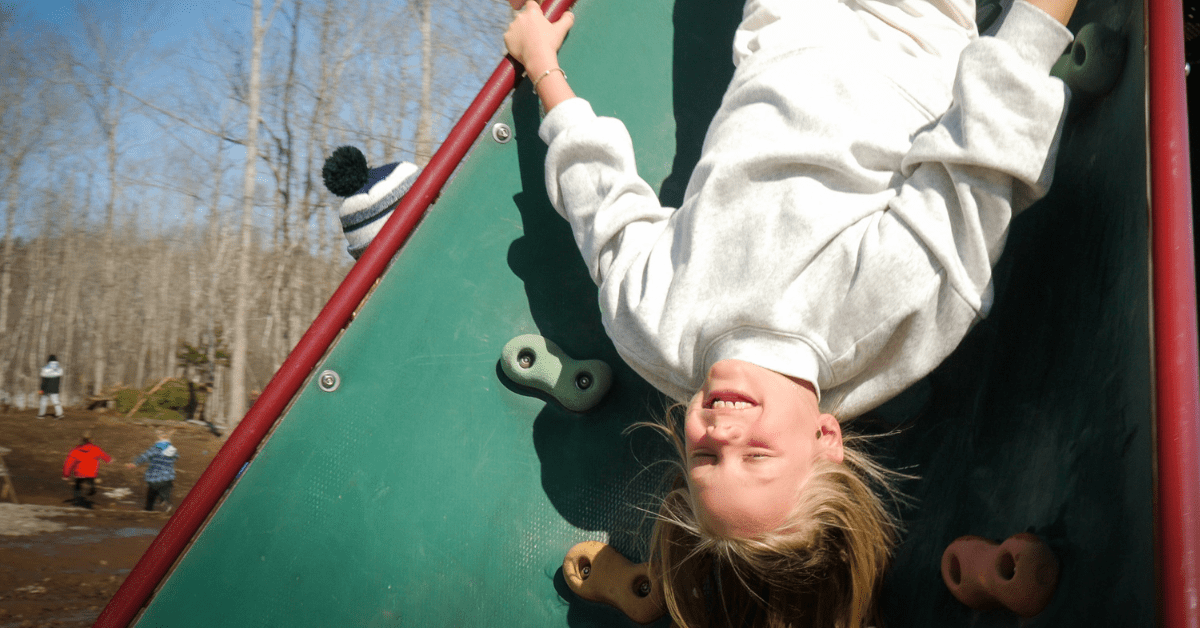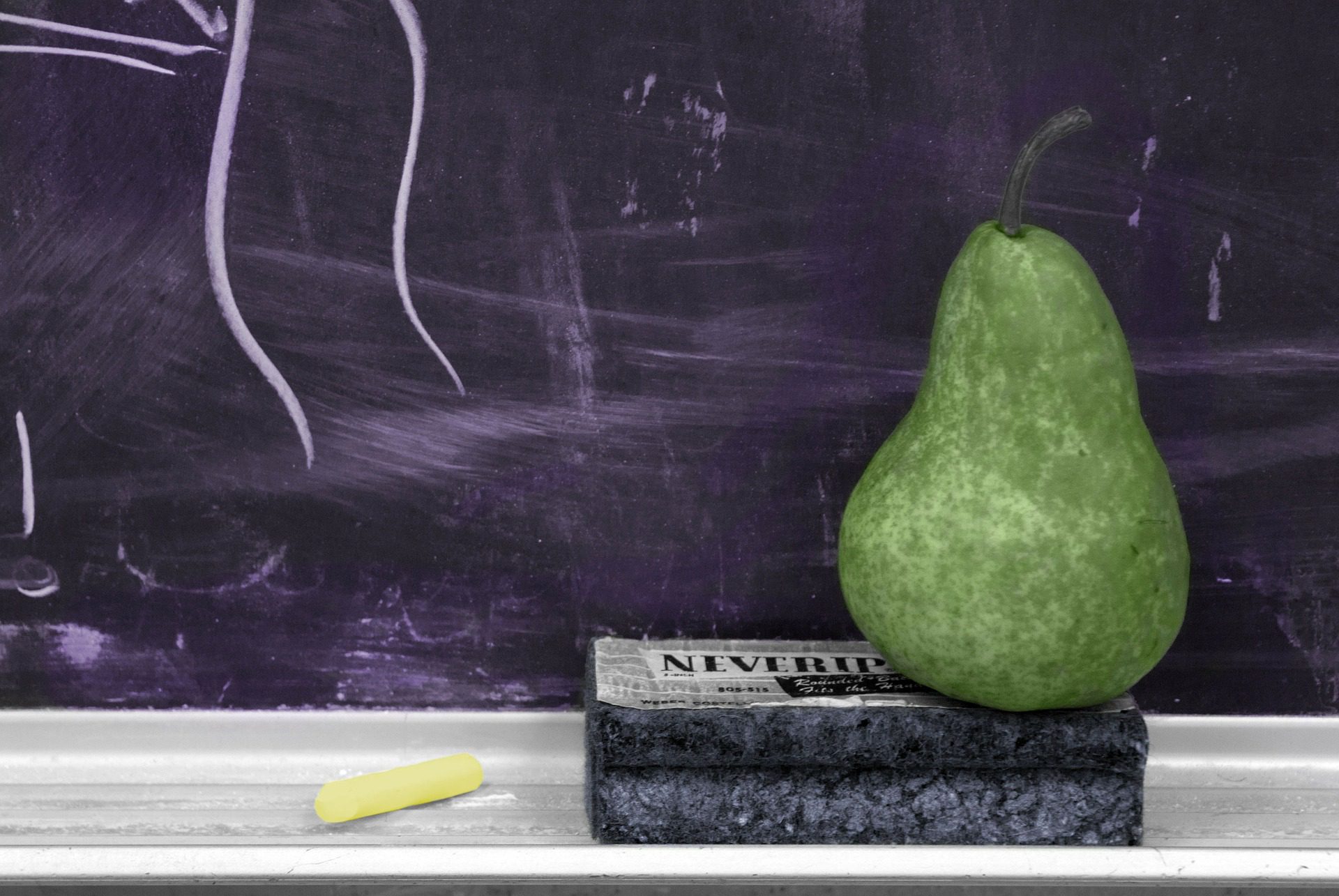The following post is based on my new YouTube video for Copper Island Academy, a Finnish-inspired school in Calumet, Michigan. Our partnership began earlier this year.
In Finland, kindergarteners usually play outside for hours every day. Rain or shine.
But playful learning isn’t just a Finnish kindergarten thing.
Starting in first grade, students in Finland often receive multiple recesses each day. In Finnish elementary schools, a typical lesson contains 45 minutes of instruction and 15 minutes of outdoor free play.
Earlier this year, I started working with Copper Island Academy, a U.S. school that implements best practices from Finnish education. In today’s blog post, we’ll take a closer look at their inspiring approach, which emphasizes outdoor learning and free play.
Bringing Back Breaks
Play is the right of every child, according to the United Nations. However, there are only eleven U.S. states that require recess.
Over the years, many American schools have cut back on recess in an effort to raise standardized test scores. Some have even ditched recess altogether.
At Copper Island Academy, all students—from kindergartners to eighth graders—receive outdoor play breaks throughout the day.
Teachers supervise the students during break times but give them a lot of autonomy. For example, students can climb trees, run up the slide, and build forts.
The Skeptics
“As a middle school teacher,” said Matt Laho, who also serves as the K-8 instructional coach, “originally, I was like, ‘Oh, I don’t know about these brain breaks and getting these kids outside.’”
Kevin Boyd, the middle school social studies teacher, felt the same way initially. “I love being outdoors, but I thought it was a lot of wasted time,” he said.
I also questioned this practice when I started teaching in Finland. But I changed my mind once I saw its positive impact on my students.
Outdoor breaks kept my Finnish fifth-graders fresh and focused at school. Teachers at Copper Island have made similar discoveries.
“It’s amazing,” said Nikki Ziegler, one of the middle school ELA teachers. “The difference in the kids from the beginning of a class period to the end of a class period is almost shocking.”
Leslie Fischer, a fifth grade teacher at Copper Island, has also been blown away by the brain breaks. “I wondered what fifth-graders would do out on the playground,” she said. “But I’ve been really amazed and impressed that it’s been so healthy for them.”
The Benefits of Recess
Recess provides many benefits backed by research:
- It raises physical activity levels
- boosts attention, memory, and concentration
- develops social and emotional skills
- lowers disruptive behavior
- and helps students focus in the classroom
“Unstructured play,” said Jennifer Farmer, Copper Island’s principal, “is critical in building the students’ critical-thinking skills, problem-solving skills, friendship skills.”
Recess also gives children time to process their learning.
“Unstructured play is a great thing as a release,” said Lesley McLean, a kindergarten teacher at the Academy. “They go outside, and they’re still pulling things together … but it’s in a much more relaxed atmosphere.”
Less Equipment = More Creativity
During most brain breaks, Copper Island students lack access to sports equipment. But this is by design.
“Because if you give a student a basketball or a soccer ball or a football, there’s already preconceived rules or knowledge around what to do with it,” said Matt Laho. “And so by removing that, you see the students are engaged in much more creative thinking.”
“I think that the unstructured play is so good for the kids,” said Megan Kelley, one of the fifth grade teachers, “because they have loads of creativity within them.”
Megan has seen students use ordinary sticks in creative ways. They might pretend they’re special items or tools, or they might use them as valuable building materials.
Outside, there’s never a shortage of activities to choose from. And those activities change with the seasons.
Playing Through the Seasons
Throughout the winter, the Copper Island playground was covered in snow. And when I visited in February, I saw students running up and down snow piles, sledding down hills, and building snow forts.
But once the spring hit, the snow started to melt—and the children began playing differently.
“The spring creates this really unique opportunity for them to interact with the water,” said Sara Koivisto, Copper Island’s reading specialist, “in whatever way they want to.”
Sara has observed that the children play by forming “tunnels so that the water flows easier, or creating barriers to try to stop it, or stomping through the puddles.”
Outdoor learning happens organically during play breaks. But Copper Island teachers also look for opportunities to teach outside.
“In my role as instructional coach, I work with the teachers to help them plan lessons to find ways to get outside,” said Matt Laho. “It could be, ‘Hey, you know what, we’re going to do some counting in math today, and instead of doing it in the classroom with blocks and tiles, we’re going to go out, and we’re going to use acorns and sticks,” he said.
American children need more time in nature. Perhaps more than ever before. (Digital devices have made it harder for kids to play and learn outside.)
But Copper Island Academy gives me hope. This Finnish-inspired school offers students lots of time outdoors and many opportunities to play.
Watch my latest YouTube video about Copper Island to see their innovative approach at work:
***
Tim Walker is an American teacher, writer, and speaker based in Connecticut. He is the author of Teach Like Finland: 33 Simple Strategies for Joyful Classrooms.
Inspired by his work in Finnish schools, Tim speaks internationally about play, trust, and joy in education. He also writes about global educational practices at teachlands.com. Reach Tim Walker at tim (at) taughtbyfinland.com.
Follow Taught by Finland on Facebook to learn more about Finnish education.



